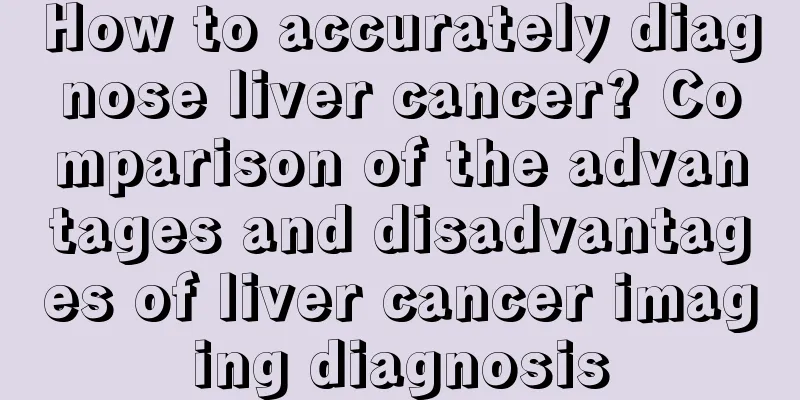How to accurately diagnose liver cancer? Comparison of the advantages and disadvantages of liver cancer imaging diagnosis

|
Liver CT perfusion imaging refers to the dynamic scanning of the selected liver layer after intravenous injection of contrast agent. The time-density curve (TDC) of each pixel in the layer is obtained based on the linear relationship between contrast agent concentration and tissue density. The various perfusion parameters of each pixel are calculated using different mathematical models based on TDC, and the color scale is assigned according to the size of the parameter to form a parametric pseudo-color map. By observing the abnormal perfusion area on the map and measuring its parameters, the nature of the area can be determined, thereby making a highly sensitive and specific diagnosis of the disease. Ultrasound contrast imaging refers to the whole process of dynamically observing and recording the blood perfusion of the lesions and liver parenchyma in the section through ultrasound after the contrast agent is injected. The local perfusion parameters of the liver can be calculated through relevant software. Ultrasound contrast imaging is similar to CTpI in the diagnosis of liver cancer, both of which track and quantitatively analyze the local microcirculation of the liver in real time. Therefore, it also has the series of values of CT perfusion imaging for the diagnosis of liver cancer, including diagnosing liver cancer, distinguishing hemangiomas, clarifying the actual size of lesions, determining tumor growth characteristics and patient prognosis, and evaluating the efficacy of non-surgical treatment of liver cancer. Ultrasound angiography has the following advantages: low price, easy for patients to accept; contrast agent (SonoVue) is non-allergenic and radiation-free during the examination, safe to use; easy to operate and can be used during surgery to improve the sensitivity of liver cancer diagnosis; easy to find liver cancer nourishing vessels and portal vein tumor thrombus. The disadvantage is that it can only focus on one lesion at a time, if there are multiple lesions in the liver, multiple angiography is required; secondly, the sound waves are affected by the depth of the lesion, blood flow velocity and iodized oil, and the missed diagnosis rate of lesions with deeper locations or slower blood flow velocity is high, and the evaluation of liver cancer after TACE is poorer than conventional enhanced CT. The advantages and disadvantages of CTpI are exactly opposite to those of ultrasound angiography. In addition, the common disadvantage of both is that they are greatly affected by respiratory movement during the angiography process, and neither is suitable for patients with respiratory dysfunction. However, there has been no research comparing the two on the same subjects, so it is difficult to determine which one is better in the diagnosis of liver cancer. |
<<: What are the early symptoms of lung cancer? Three symptoms of early lung cancer
Recommend
What are the functions of mouthwash?
Mouthwash is not unfamiliar to everyone and many ...
Is it good to eat after running?
Running is a sport that most of our friends usual...
What should I do if I keep hiccuping and how can I stop it?
Hiccups are not a disease, but they are very anno...
What is the use of a home first aid kit
If you take good care of your body, symptoms of t...
Can mango and durian be eaten together?
Durian and mango are both fruits unique to southe...
What are the causes of occupational skin cancer
The incidence of skin cancer is relatively low in...
What are the traditional Chinese medicines for foot soaking to remove dampness
Feet play a certain important role in the human b...
Effective folk remedies for treating pancreatic cancer
Effective folk remedies for treating pancreatic c...
What causes high blood transaminase?
High levels of transaminase in the blood are very...
Is cervical cancer hereditary?
Parents are most worried about patients with obvi...
Can nasopharyngeal cancer cause facial pain?
Can nasopharyngeal cancer cause facial pain? 1. N...
What are the benefits of ivory to the human body
Elephants are large animals with a pair of very d...
How to rub your stomach when it hurts
Stomach pain is a very common condition, and ther...
What snacks can pancreatic cancer patients eat
Pancreatic cancer is a disease that troubles many...
Teach you how to wear a bra
Some people have worn bras for so many years but ...









